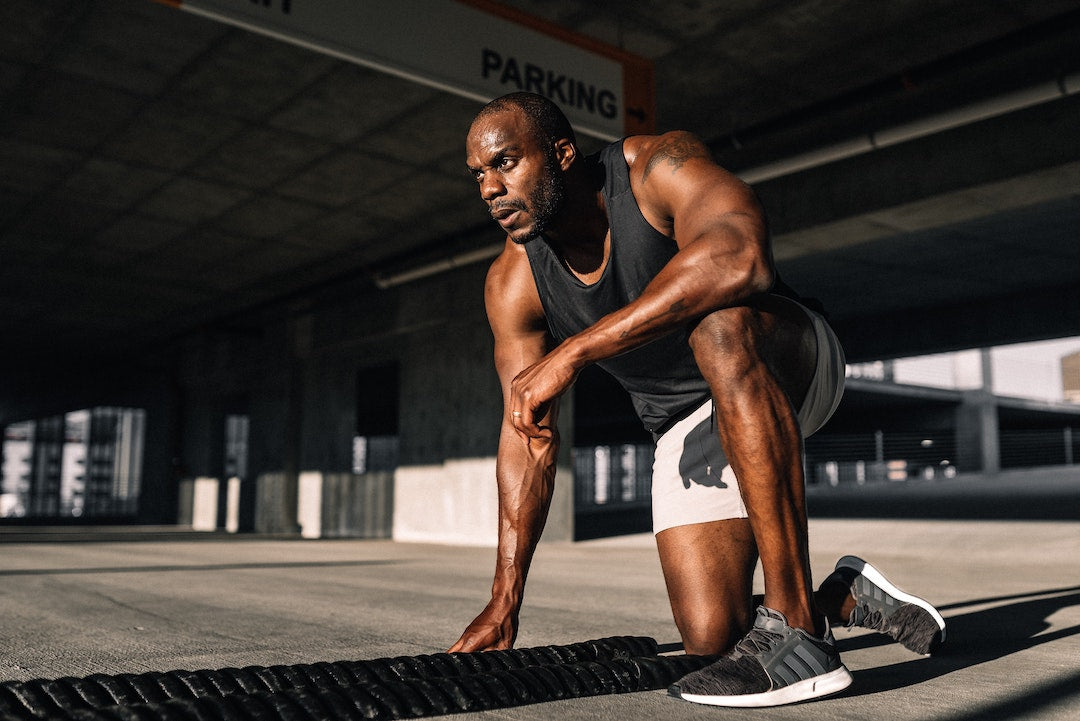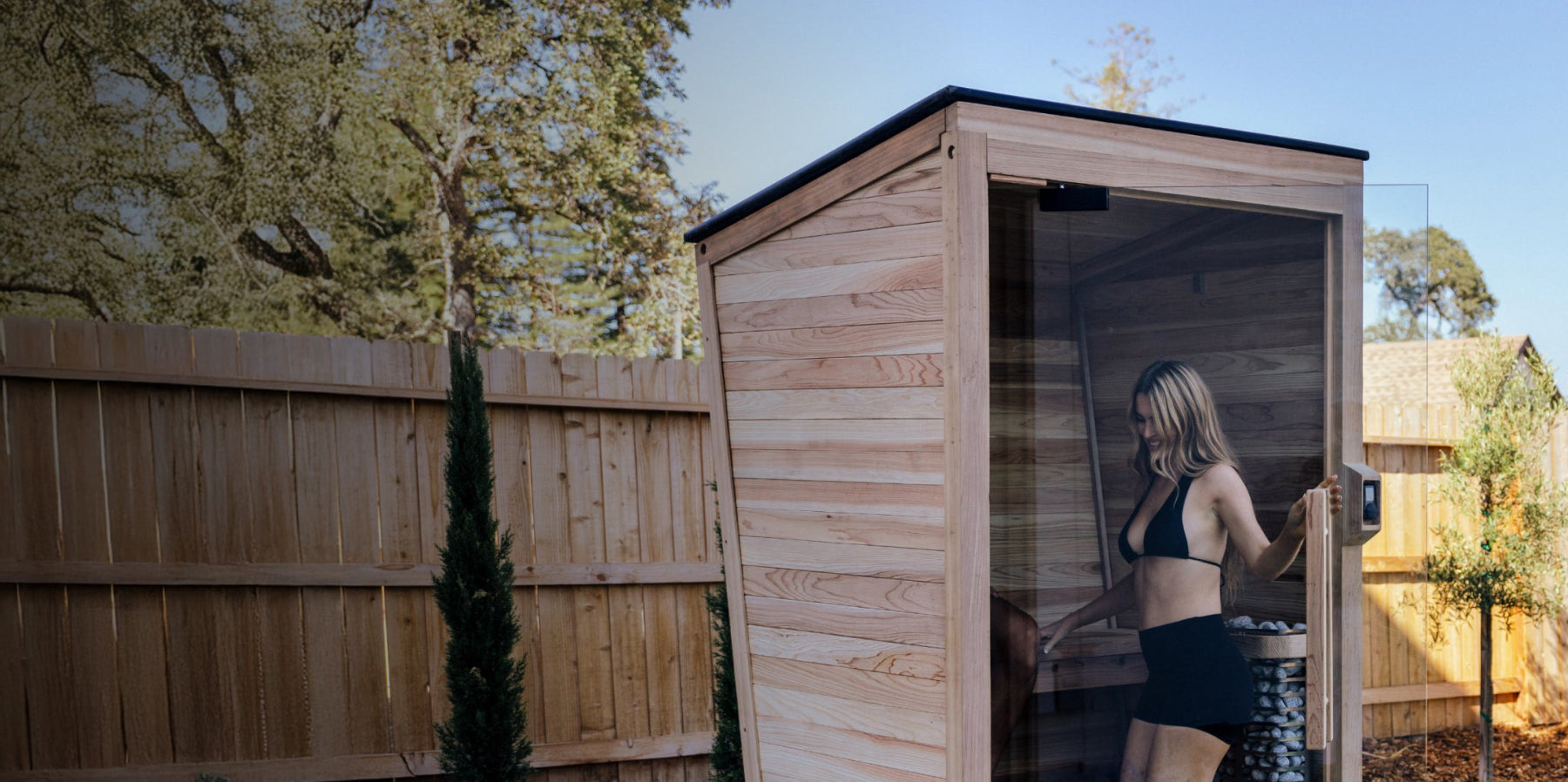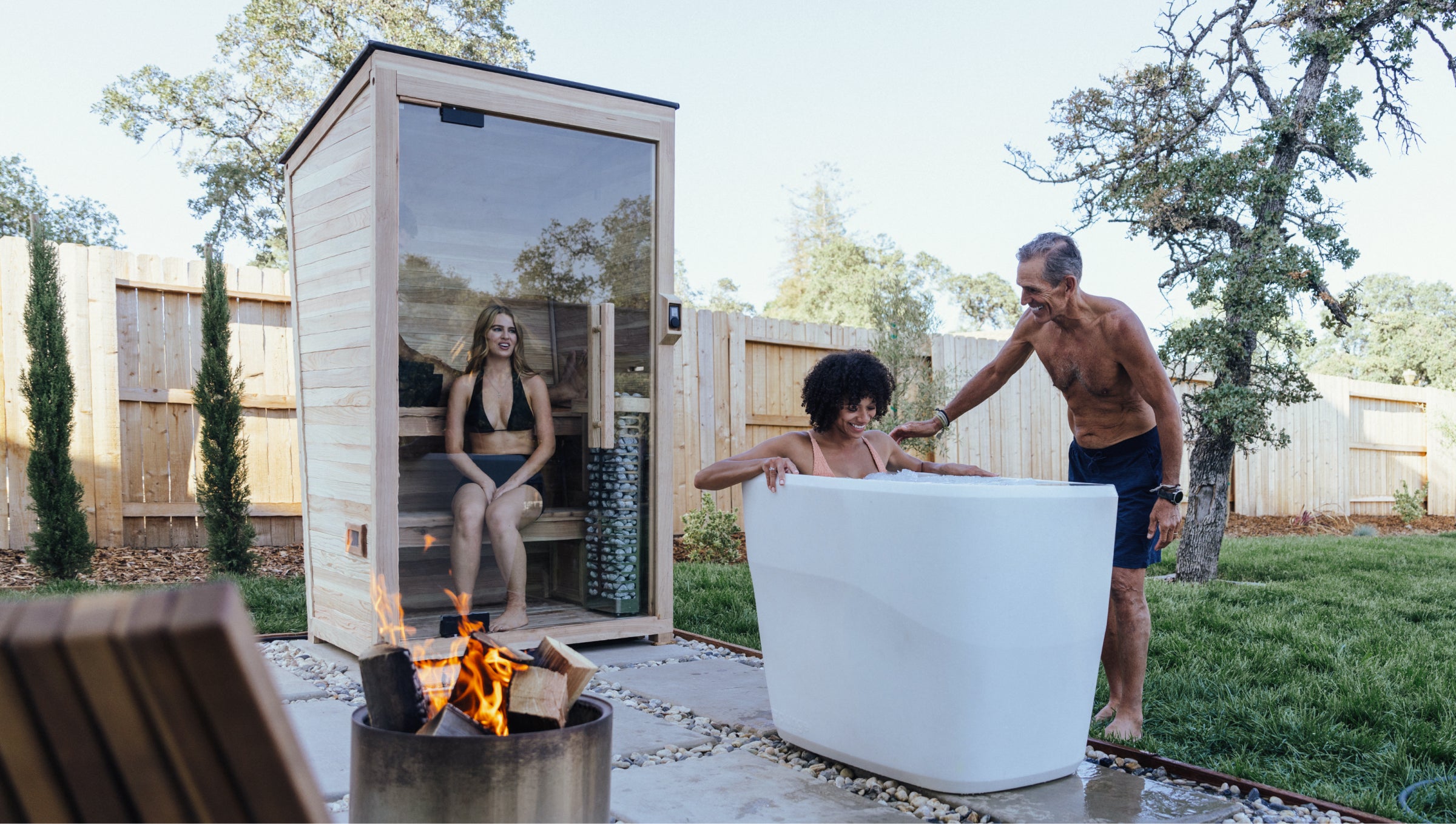
What Helps Sore Muscles? 11 Tips for Post-Workout Recovery
We’ve all been there the morning after an intense workout. Stiff muscles, aching joints, and total exhaustion are just a few of the “symptoms” of post-workout stress on your body Exercise is a crucial part of leading a healthy lifestyle, but it doesn’t come without its difficulties. The good news is that you can take steps to reduce muscle soreness and maximize muscle recovery after workouts, reducing your discomfort and wait time until your next physical activity.
Table of Contents:
- What Causes Muscle Soreness?
- Active vs. Passive Recovery
- Foods for Muscle Recovery
- Tips for Reducing Muscle Soreness & Recovering Faster
- Conclusions
What Causes Muscle Soreness?
No matter how experienced of an athlete you are, you’re bound to feel soreness a day or two after a workout. This phenomenon is called Delayed Onset Muscle Soreness (DOMS), and it’s a fairly universal experience.
When you exercise, you put your muscles to the test — and often, you work them harder than they are used to. To handle this increased workload, your muscle fibers have to endure microscopic tears or mild muscle strains. This microtrauma induces inflammation in the muscles to heal and protect them. Typically 24 to 48 hours later, you feel the full effects of these micro-tears, resulting in muscle pain and soreness.
Muscle Inflammation/DOMS Symptoms
The good news is that DOMS rarely lasts longer than 72 hours and will always go away eventually. The bad news is that there’s not much you can do to avoid DOMS in the first place, and it’s necessary for the healing process and for building muscle. Common symptoms of post-workout inflammation include:
- Discomfort when stretching affected muscles
- Affected muscles feel tender to the touch
- Reduced range of motion/stiffness
- Swelling in affected muscles
- Temporarily reduced strength in affected muscles
Active vs. Passive Recovery
In general, when people are talking about workout recovery, they’re usually referring to one of two types of recovery.
Active recovery is relatively self-explanatory — you remain active at a lower level of intensity following an exercise in order to “cool down.” A great example of this would be taking a short walk in between sets of weight lifting.
Passive recovery focuses on remaining inactive and allowing your body to rest and heal. Though it can be helpful in some situations, it’s mostly reserved for major injuries or significant pain in a particular area that prevents movement.
Other than those situations, we believe that active recovery is always the way to go.
Active Recovery Tips
Because passive recovery is just that — passive — there aren’t many methods to explain and discuss. So let’s focus on ways to maximize any active recovery you do. One of the most important aspects of active recovery is movement. By putting your muscle groups through gentle exercises, you allow them to function in their full range of motion while still resting the muscles themselves. Here are some tips and examples of ways to incorporate effective active recovery into your workouts:
- Mobility Exercises - these are critical to a good active recovery workout. We recommend doing some dynamic stretches that keep your body moving but still use the full range of motion for each muscle.
- Light Physical Activity - even adding a short jog or ten minutes on the stationary bike between sets can tremendously help your workout recovery process.
- Do Something Fun - play a game of pick-up basketball or go on a run with your dog! Just make sure you listen to your body and don’t push yourself too hard.
- Take a Plunge - when you take a quick cold plunge, your blood vessels constrict to keep heat closer to your vital organs. When you hop out, however, your blood vessels expand once again, increasing blood flow throughout the body. By adding in a cold plunge after workouts, you can boost your muscle recovery!

If you’re having trouble adding active recovery to your training days, consider turning a rest day into an active recovery day. Instead of taking a complete break from working out, just lighten your load for a day and focus on giving your body the attention it needs.
Foods for Muscle Recovery
It's no secret that you need protein and carbohydrates for recovery, but you have to be sure to pick the right ones. Prioritize high-quality proteins in milk, yogurt, eggs, cheese, lean meats, nuts & seeds, soy foods, fish, and whey protein.
Then, prioritize carbs like fresh fruit, oatmeal, chocolate milk, whole grain pasta & bread, sweet potatoes, and quinoa. Try to avoid refined carbs because these can actually cause inflammation.
Add Extra Produce To Your Diet
Adding extra produce to your diet can further reduce inflammation because fruits and vegetables are high in antioxidants, which help protect cells from damage. They're also a good source of vitamins and minerals that are important for recovery. Even better, many fruits and veggies contain a decent amount of water that your cells need to recover.
Some of the best produce to reduce inflammation include tomatoes, strawberries, blueberries, cherries, oranges, and leafy greens (like spinach, kale, and collards).
Avoid Refined Carbs & Sugar
As mentioned above, refined carbs and sugar may worsen inflammation because they can disrupt the body's natural balance of good and bad bacteria. Common sources of refined carbs come from white bread, pasta, pastries, desserts, and many breakfast cereals. Instead, try focusing on swapping whole, unprocessed foods into your diet like fruits, vegetables, lean protein, and healthy fats.
Avoid Alcohol and Tobacco
Alcohol and tobacco are two of the most common causes of inflammation. They can damage cells and lead to a range of health problems even if you don't work out.
- Alcohol consumption interferes with myofibrillar protein synthesis (MPS), which is related to the recovery and growth of skeletal muscles. Following your workout, MPS is significantly elevated so any alcohol in your system may hinder muscle recovery and regeneration.
- Smoking tobacco is dangerous to anyone's health, especially when recovering from a workout. The nicotine and carbon monoxide released by smoking may make your blood sticky and narrow your arteries, reducing the blood flow to your heart, muscles, and body organs. Tar from cigarettes collects in the airways and limits your air intake, decreasing your oxygen supply, starving your muscles of oxygen, and leading to lower endurance.
How to Reduce Muscle Soreness & Recover Faster
It’s important to understand that your post-workout recovery is just as important as your workout routine in getting desired results like muscle gain, weight loss, and maintenance. A good post-workout routine can help you reduce muscle soreness, maintain optimum energy levels, restore vitality, and promote maximum recovery so you can get back to exercising sooner while minimizing the risk of injuries.
What exactly does an effective recovery routine consist of? The following tips are great starting points to consider adding to your post-workout routine:
- Stay Hydrated Before, During, & After
- Stretches for Sore Muscles
- Cold Water Therapy Post-Workout
- Heat Therapy to Relieve Soreness
- Practice Contrast Therapy
- Massage Aching Areas
- Try Compression Garments
- Cool-Down Exercises
- Plan & Take Rest Days
- Get Ahead Of It
- Get More & Better Sleep
1. Stay Hydrated Before, During, & After
One of the most important things you can do in general and for your post-workout recovery is to hydrate. The body loses a lot of fluid as it sweats, especially during intense workouts, so water needs to be replenished to recover and perform optimally. To make sure your body gets the hydration it needs, drink plenty of fluids before, during, and after your workout.
The American Council on Exercise recommends:
- Before - 8 ounces of fluid 20-30 minutes before starting your workout
- During - 7 to 10 ounces of fluid every 10-20 minutes during exercise
- After - 8 ounces of fluid 30 minutes after your workout
It’s also recommended to increase your daily water intake in general. If you get dehydrated, water can’t cool your muscle tissues, which worsens chronic muscle and joint pains. That’s why it is always important to stay hydrated, especially if you often participate in physical activities.
2. Stretches for Sore Muscles
Even though you might not want to in the moment, stretching post-workout can and will ease your sore muscles in the long run. Common stretches to ease soreness include lunges, knee-to-chest, pigeon pose, leg swings, and shoulder blade squeezes.
You can find stretching routines to target your aching muscles after every workout, but just stretching post-workout won’t give you the best results. Instead, try to develop a daily stretching routine in addition to stretching after a workout. This will increase the flexibility and durability of your muscles, which will reduce your future muscle soreness.
3. Cold Water Therapy Post-Workout
After your workout, you should focus on cold therapy treatments like cold water tubs, cold compresses, and ice packs. This is because it reduces inflammation in your muscles and provides some numbing relief. In ice baths, the cold water constricts blood vessels and decreases the flow of blood to the affected muscles, which can help reduce pain, swelling, and stiffness. Ice baths can also elevate your energy levels, relieve stress, boost your mood and immune system, and support better sleep.
You can create your own ice bath by filling a tub with cold water and ice. Then, immerse yourself in the tub for about 2-5 minutes, followed by a warm-up period by wrapping yourself in a towel or blanket, or doing bodyweight movements. The downside to DIY ice baths is that they can be time-consuming to set up and clean, and difficult to get the right temperature.
If you’re serious about reducing inflammation and improving your recovery routine, consider investing in a dedicated cold plunge tub to elevate your at-home ice bath recovery. We have several options available to suit a variety of needs and budgets.
4. Heat Therapy to Relieve Soreness
After the first day or two of sore muscles, you can make the switch to heat therapy treatments — including saunas, heating packs, and hot tubs. These will relax your muscles, increasing blood flow and providing a host of other benefits. Apply heat on stiff or painful areas, and try some moist heat therapy techniques to get the most out of your thermotherapy.
Learn more about saunas vs. hot tubs for recovery.
5. Practice Contrast Therapy
If you want to get even more out of your temperature therapy, you can do a combination of hot and cold therapy, also known as contrast therapy. This consists of switching between hot and cold temperatures for a few cycles. When your body gets cold, your blood vessels dilate, reducing blood flow to preserve your heat. When you heat back up again, your blood vessels expand, increasing blood flow. By switching back and forth between the two, you can help improve your circulation, bring more blood to your muscles, and aid your recovery. After a workout, we recommend starting and ending with a cold, as heat can exacerbate swelling and inflammation, which is the opposite of what we want in muscle and workout recovery.
For small areas, you can have two separate containers of water (or packs) — one hot and one cold — and alternate back and forth after a few minutes of each. This works particularly well for hand and foot issues but can’t really be used for the whole body. Some people stick to simple ice packs and hot packs but you can also go between an ice bath and a sauna for full-body contrast therapy.
6. Massage Aching Areas
A light massage after exercising can reduce future pain from the delayed onset of muscle soreness. Based on a recent study, massage therapy effectively relieves muscle soreness after a workout. It can also help recovery by easing inflammation and relieving tightness and swelling of the muscles through pressure.
When your muscles are aching, it can be tempting to dig into them and get a deep tissue massage. Unfortunately, deep tissue massages won’t do much for your muscles after a workout, so try a gentler form of massage instead. For hard-to-reach areas like your back, consider a foam back roller, back massage pad, or going to a professional.

7. Try Compression Garments
On the note of gentle compression, wearing compression garments on various body parts after a workout has become popular with athletes over the past few decades. This is because research has shown that they have moderate effects in reducing the severity of DOMS and can enhance recovery from muscle damage.
The light pressure acts similar to a low-level massage which, as we mentioned before, is effective at reducing muscle soreness. Compression garments also raise the temperature of the skin and surrounding tissues, which increases blood flow and promotes muscle healing.
8. Cool-Down Exercises
One of the last things you probably want to do after a tough workout is put in more physical effort, but cool-down exercises are essential and allow your heart rate to gradually return to its normal rate. It’s recommended to take at least five minutes before moving on to other activities to avoid muscle strain or other injury. Cooling down can help ease muscle tension, boost mobility, and enhance blood flow (which promotes delivery of oxygen and nutrients to those tired muscles you just worked out).
Some simple cool-down exercises can include no-incline slow walking, upper body stretches, standing quad stretches, cat-cow stretches, and most slow, low-exertion ways of moving and stretching your body.
9. Plan & Take Rest Days
Rest days are an essential part of any athlete's routine as they are the absolute best way to reduce soreness and recover from working out. They give your body time to recover and heal itself from the physical stress of training. Plan your rest days ahead of time to help you stick to your schedule and avoid overtraining. On rest days, try to focus on activities that promote recovery, such as light movement, relaxation, stress management, or even simply resting.
10. Get Ahead Of It
As the old saying goes, “The best defense is a good offense!” In this case, you can take the initiative and go on the offense against your sore muscles by preparing intelligently before each workout.
Instead of standing in one place and doing a few half-hearted stretches, try and get your body moving and your blood flowing. Dynamic stretches and foam rolling will become your go-to routine once you discover the difference they can make in your workout health.
Preparing for a workout also helps you build muscles to take on a higher workload during the exercise. By lengthening your muscles and getting the blood flowing before they are going at 100%, you can better prevent injury and increase the effectiveness of all your workouts.
11. Get More & Better Sleep
Sleep is essential for recovery because it’s when your body repairs cells and tissues. It also helps to reduce stress levels, which can lead to more inflammation if not addressed. To get more quality sleep, you may want to consider incorporating these habits:
- Go to bed and wake up at the same time every day
- Avoid caffeine and alcohol before bed
- Create a relaxing bedtime routine
- Make sure your bedroom is dark, quiet, and cool
- Limit screen time before bed
- Aim for at least seven hours or more of sleep
Cold plunging can also improve your sleep quality, and has been shown to help “re-calibrate” your circadian rhythm. This lets the body know when it’s time to wind down for rest, often making it easier to fall asleep and stay asleep.
Recover Faster From Workouts
There’s a lot that goes into maximizing your workouts and recovery. However, some things just make sense to start incorporating. For example, there’s a reason so many top athletes use ice baths to speed up recovery and reduce inflammation. So after your next workout, why not try a cold plunge?
Our Plunge tubs are designed to give you a quick, convenient, and therapeutic cold tub experience. Upgrade your at-home recovery routine with the Plunge All-In for a more effective, practical, and enjoyable ice bath and recovery experience. And don’t forget to grab a copy of our FREE cold plunge protocols for the most effective ice bath.
We offer financing options, and our products are FSA and HSA-eligible to make them even more accessible. Hit new personal goals and reduce your recovery time when you invest in yourself and take the Plunge.
Medical Disclaimer: All information, content, and material of this website is for informational purposes only and is not intended to serve as a substitute for the consultation, diagnosis, and/or medical treatment of a qualified physician or healthcare provider. Always seek the advice of your physician or other qualified health providers with any questions you may have regarding a medical condition.







